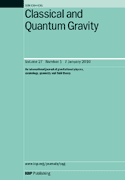
CLASSICAL AND QUANTUM GRAVITY
Scope & Guideline
Elevating Understanding of Gravity Across Dimensions
Introduction
Aims and Scopes
- Classical Gravity Theories:
Research focusing on classical theories of gravity, primarily general relativity, including its mathematical foundations, solutions, and implications for astrophysical phenomena. - Quantum Gravity:
Exploration of quantum gravity approaches, including loop quantum gravity, string theory, and effective field theories, addressing the unification of quantum mechanics with general relativity. - Gravitational Waves:
Studies related to the detection, modeling, and interpretation of gravitational waves, including waveform predictions and their astrophysical sources. - Cosmology:
Investigations into cosmological models, the early universe, dark energy, and modifications of gravity, particularly in relation to observational data. - Mathematical and Computational Methods:
Development of mathematical techniques and computational tools for simulating gravitational phenomena, including numerical relativity and perturbation theory. - Astrophysical Applications:
Application of gravitational theories to astrophysical scenarios such as black holes, neutron stars, and gravitational lensing, often involving observational data.
Trending and Emerging
- Gravitational Wave Astronomy:
With the advent of advanced detectors like LIGO and Virgo, research related to gravitational wave detection, analysis, and astrophysical implications has surged, marking a significant trend in recent publications. - Quantum Information and Black Holes:
An increasing focus on the interplay between quantum information theory and black hole physics, particularly the information paradox and its implications for the nature of spacetime. - Machine Learning and Data Analysis:
The application of machine learning techniques for data analysis in gravitational wave astronomy is gaining traction, as researchers seek to improve detection methodologies and parameter estimation. - Cosmological Models and Dark Energy:
Research into alternative cosmological models and the nature of dark energy is trending, reflecting ongoing debates about the universe's expansion and its underlying physics. - Thermal and Quantum Effects in Black Hole Physics:
Emerging studies on the thermal properties of black holes, including Hawking radiation and thermodynamic behavior, are gaining attention as researchers seek to understand black hole entropy and information.
Declining or Waning
- Non-Lorentzian Gravity Theories:
Research on gravity theories that deviate from Lorentzian structures, while once a niche area, has seen reduced publication frequency, possibly overshadowed by more mainstream approaches like general relativity and quantum gravity. - Higher-Dimensional Gravity:
Explorations of gravity in higher-dimensional frameworks, while foundational, have seen less attention compared to four-dimensional theories, as researchers focus more on observable consequences of lower-dimensional models. - Classical Solutions in Modified Gravity:
The study of classical solutions in modified gravity theories has waned as the community shifts towards quantum aspects and observational predictions, particularly in the context of gravitational waves.
Similar Journals
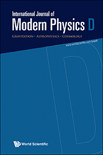
INTERNATIONAL JOURNAL OF MODERN PHYSICS D
Innovating Knowledge in Modern PhysicsWelcome to the INTERNATIONAL JOURNAL OF MODERN PHYSICS D, a premier publication dedicated to the advancement of knowledge in the fields of Astronomy and Astrophysics, Mathematical Physics, and Space and Planetary Science. Published by WORLD SCIENTIFIC PUBL CO PTE LTD in Singapore, the journal boasts an impressive impact, being ranked Q2 in Astronomy and Astrophysics and Mathematical Physics, and Q3 in Space and Planetary Science. With a converged publishing timeline from 1996 to 2024, this journal provides a vital platform for researchers and professionals to disseminate their findings, engage with cutting-edge research, and explore emerging ideas in modern physics. Although it operates under a traditional access model, the rigorous peer-reviewed process ensures that only the highest quality research contributes to the collective understanding of our universe. Join us in advancing the frontiers of physics and astronomy!
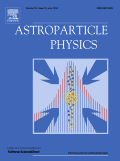
ASTROPARTICLE PHYSICS
Unraveling the Mysteries of the Universe Through Particle InsightsASTROPARTICLE PHYSICS is a premier international journal dedicated to advancing the understanding of the intersection between particle physics, astronomy, and astrophysics. Published by Elsevier, this journal has established itself as a leading source of research insights since its inception in 1992, with a remarkable impact factor positioning it within the Q1 category for Astronomy and Astrophysics for 2023. With a Scopus ranking of 18 out of 90 in its field, representing the top 80th percentile, ASTROPARTICLE PHYSICS serves as an essential platform for disseminating groundbreaking research that influences astrophysical studies and cosmological theories. Researchers and academics have access to a robust collection of peer-reviewed articles that explore various dimensions of astroparticle phenomena, collaborative cosmic investigations, and theoretical advancements. Although not an open-access journal, it provides extensive research coverage accessible to a global audience from its headquarters in Amsterdam, Netherlands, offering a vital resource for those seeking to push the boundaries of knowledge in the realms of astrophysics and particle physics.

Journal of High Energy Astrophysics
Advancing Knowledge: The Frontier of High Energy AstrophysicsThe Journal of High Energy Astrophysics, published by Elsevier, is a premier platform for groundbreaking research in the fields of astrophysics and high-energy phenomena. With an ISSN of 2214-4048 and an E-ISSN of 2214-4056, this journal has quickly established itself as a leader since its inception in 2014. Operating out of the Netherlands, it is recognized for its rigorous peer-review process and high-quality publications, earning an impressive Q1 ranking across multiple domains, including Astronomy and Astrophysics, Nuclear and High Energy Physics, and Space and Planetary Science in 2023. With a Scopus rank of 12 out of 90 in the Astronomy and Astrophysics category, and being positioned in the 87th percentile, the journal plays a pivotal role in disseminating advancements and fostering collaboration among researchers, professionals, and students. Though the journal is not open access, it offers robust subscription options for institutions and individuals seeking to dive into the latest discoveries and theories in high-energy astrophysics.
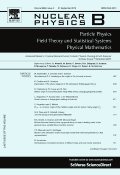
NUCLEAR PHYSICS B
Innovating the Future of Nuclear ScienceNUCLEAR PHYSICS B, published by Elsevier, stands at the forefront of research in the dynamic field of Nuclear and High Energy Physics. Established in 1967, this prestigious journal has developed a reputation for excellence, now positioned in the Q1 category according to its 2023 quartile rankings. With an impressive Scopus rank of #21 out of 87 in its category and a commendable 76th percentile, it serves as a vital resource for scholars investigating the underlying principles of nuclear interactions and particle physics. The journal transitioned to an Open Access model in 2014, ensuring that groundbreaking research is accessible to a global audience. Its commitment to quality and innovation makes NUCLEAR PHYSICS B an essential platform for researchers, professionals, and students aiming to stay at the cutting edge of discoveries in this expansive field, contributing to the scientific discourse for nearly six decades.

PHYSICS ESSAYS
Advancing Knowledge Through Unique PerspectivesPHYSICS ESSAYS, published by PHYSICS ESSAYS PUBLICATION, serves as a unique and influential platform within the field of Physics and Astronomy. With an ISSN of 0836-1398 and an E-ISSN of 2371-2236, this journal fosters the dissemination of innovative ideas and rigorous research, encouraging contributions that challenge conventional paradigms. Although the journal's Scopus coverage has been discontinued since 2017, it continues to uphold its legacy of scientific inquiry with a focus on pivotal developments in the discipline, garnering a Scopus rank within the 15th percentile. The journal, based in Ottawa, Ontario, Canada, invites submissions that are reflective of its broad scope in experimental, theoretical, and applied physics, appealing to a diverse audience of researchers, professionals, and students alike. While it operates on a non-open access model, the journal remains an essential resource for those seeking to navigate the complexities of modern physics.

PHYSICAL REVIEW LETTERS
Pioneering High-Impact Research in PhysicsPhysical Review Letters, published by the American Physical Society, is a premier journal in the field of Physics and Astronomy renowned for its rapid dissemination of high-impact research findings. With a distinguished history dating back to 1958 and an impressive ranking of #13 out of 243 in the general physics category, it stands proudly within the Q1 quartile, placing it in the top 6% of journals in its field. The journal focuses on brief reports of significant fundamental research across all areas of physics, making it an essential resource for researchers, professionals, and students seeking to stay at the forefront of developments in their field. Although Physical Review Letters does not offer open access options, its rigorous peer-review process ensures a high standard of quality and relevance in its published articles. With an unwavering commitment to advancing the understanding of physical science, this journal is indispensable for those looking to make a genuine impact in their research endeavors.

Living Reviews in Relativity
Elevating the Discourse in Physics and AstronomyLiving Reviews in Relativity, published by SPRINGER INT PUBL AG, stands at the forefront of the field of relativity, offering a dynamic platform for the dissemination of high-quality, peer-reviewed research. Since its inception in 1998, this Open Access journal has committed to providing continuous updates and comprehensive reviews, making it an indispensable resource for researchers and scholars in the categories of Physics and Astronomy, where it holds a prestigious Q1 ranking. With its impressive Scopus ranking of #1 out of 81 in the Physics and Astronomy (miscellaneous) category, it boasts a remarkable 99th percentile ranking, underscoring its significance in advancing scientific discourse. Operating out of Switzerland, Living Reviews in Relativity serves as a vital conduit for sharing knowledge and insights, fostering collaborative research, and promoting timeless discussions in the ever-evolving landscape of relativistic physics.
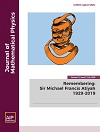
JOURNAL OF MATHEMATICAL PHYSICS
Exploring the intersection of theory and application in physics.Welcome to the JOURNAL OF MATHEMATICAL PHYSICS, a distinguished publication dedicated to the burgeoning fields of mathematical physics and statistical and nonlinear physics, published by AIP Publishing. Established in 1960, the journal continually showcases cutting-edge research and theoretical advancements that drive the understanding of complex systems and mathematical formulations within physics. With an impressive Scopus ranking of #38 in Mathematical Physics and #39 in Statistical and Nonlinear Physics, the journal is recognized for its vital contributions to the academic community, achieving a solid Q2 quartile ranking in both categories for 2023. While not an open-access journal, it remains a critical resource for researchers, professionals, and graduate students seeking insights into rigorous mathematical methods and their applications in physical sciences. Engage with the finest research as we converge toward new frontiers from 1960 to 2024, fostering academic collaboration and innovation.

INTERNATIONAL JOURNAL OF THEORETICAL PHYSICS
Unveiling the Mysteries of Theoretical ResearchInternational Journal of Theoretical Physics is a premier academic journal dedicated to the advancement of knowledge in the fields of theoretical physics and mathematics. Published by Springer/Plenum Publishers, this esteemed journal has been a vital platform for researchers since its inception in 1968. With an impressive track record and an emphasis on high-quality, innovative research, the journal currently ranks in the third quartile (Q3) in both the Mathematics (Miscellaneous) and Physics and Astronomy (Miscellaneous) categories as of 2023. While the journal is not open access, it offers accessible subscription options for institutions and individuals. The International Journal of Theoretical Physics serves as an essential resource for scholars and practitioners looking to deepen their understanding and contribute to the evolving landscape of theoretical research, making it a key player in nurturing academic discourse and fostering collaboration in its field.
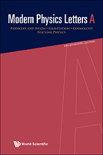
MODERN PHYSICS LETTERS A
Illuminating the Path of Modern Physics ExplorationMODERN PHYSICS LETTERS A, published by World Scientific Publishing Co Pte Ltd, is a distinguished journal in the field of physics that serves as a pivotal platform for researchers, professionals, and students alike. With ISSN 0217-7323 and E-ISSN 1793-6632, the journal has gained international acclaim for its contributions to Astronomy and Astrophysics as well as Nuclear and High Energy Physics. The journal is ranked in Q3 for both Astronomy and Astrophysics and Nuclear and High Energy Physics, showcasing its relevance in these areas, while also achieving a Q2 ranking in the broader category of Physics and Astronomy (miscellaneous). Spanning from 1996 to 2024, MODERN PHYSICS LETTERS A promotes open dialogue and dissemination of pioneering research findings and innovative theories. While the journal operates without an open access option, its rich content is easily accessible through various academic databases, ensuring that vital research is shared widely among the scientific community. Situated in Singapore, this journal plays an essential role in the continuous advancement of the physics discipline, fostering collaboration and knowledge sharing among global researchers.